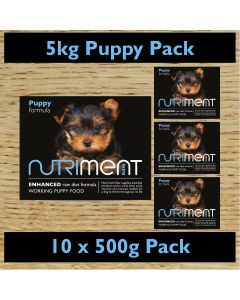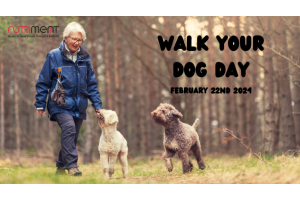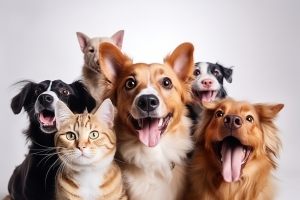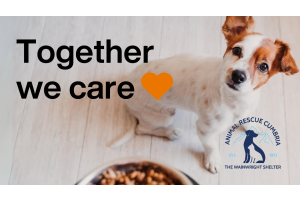Helping your puppy settle into the home
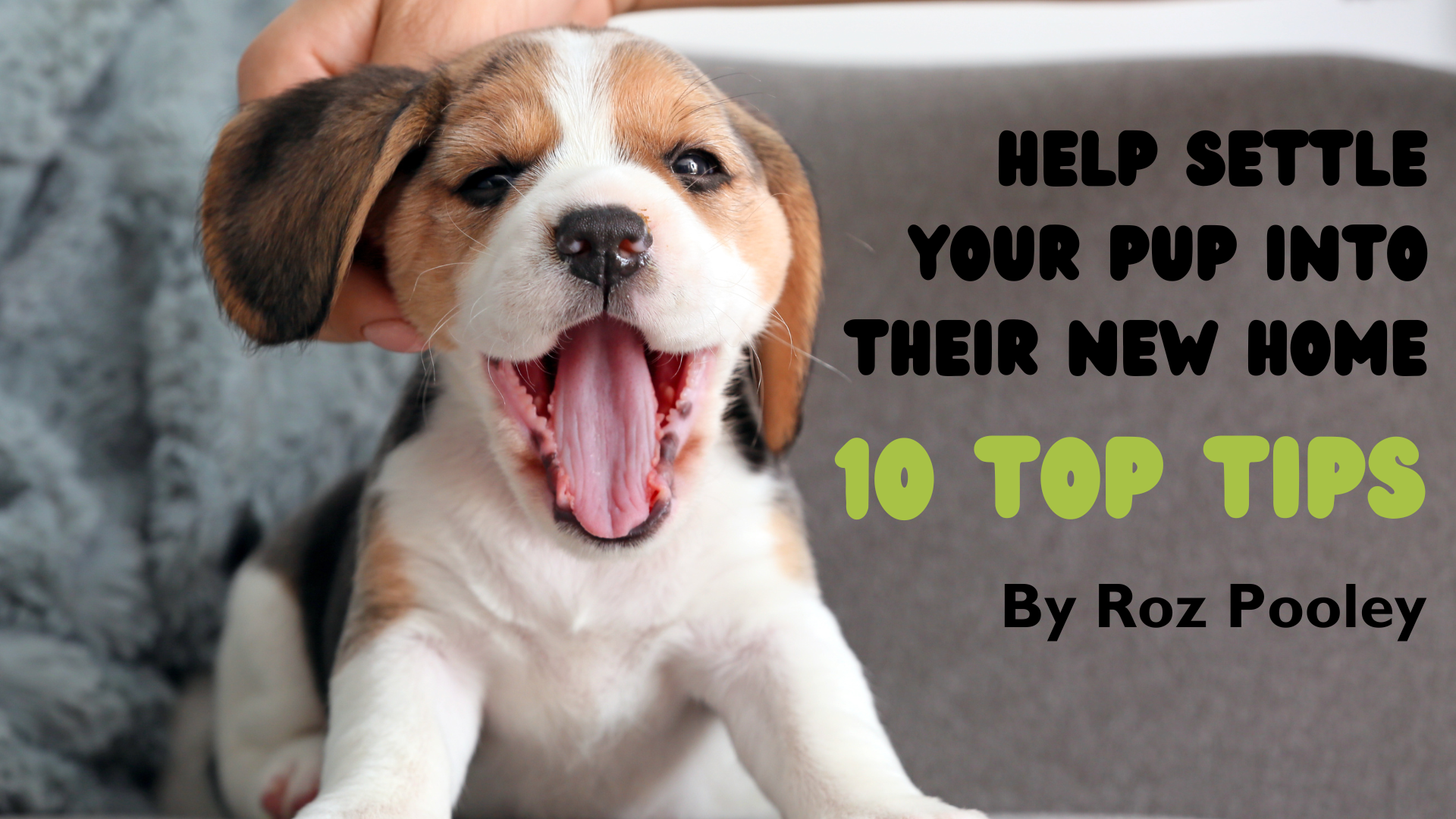
by Roz Pooley, The Mutty Professor
Incoming puppy! How exciting!
But it can also nerve-wracking. There’s a plethora of advice out there, and it can be challenging for owners to sift out the helpful advice from the inaccurate and at times, even dangerous suggestions.
I’ve noticed that many owners are feeling under increasing pressure to have the perfectly behaved dog. Of course, we all want our dogs to turn into well rounded and well-behaved individuals. But owner’s putting themselves and subsequently putting their puppies under pressure to fit lifestyles and ideologies can lead to puppy-hood becoming incredibly stressful for both.
Here are some tips on helping your puppy settle into their new home and into their lives with you.
1. Be prepared
Puppies are all individuals, taking varying durations to settle into their new lives and respond to training. Free up time in your schedule for up to four weeks to help settle your puppy in. If you have work commitments, arranging for support from family, friends or pet carer professionals is sensible.
During those first four weeks you can expect disrupted sleep and frequent interruptions across your day, requiring you to engage with your puppy and attend to matters such as toilet training. You also need to allow time to help them learn as and when they can cope with being left home alone.
Four weeks is not a fixed figure, some puppies may take longer to toilet train, learn to cope home alone and develop a night time routine. You should have a plan B in place for this eventuality.
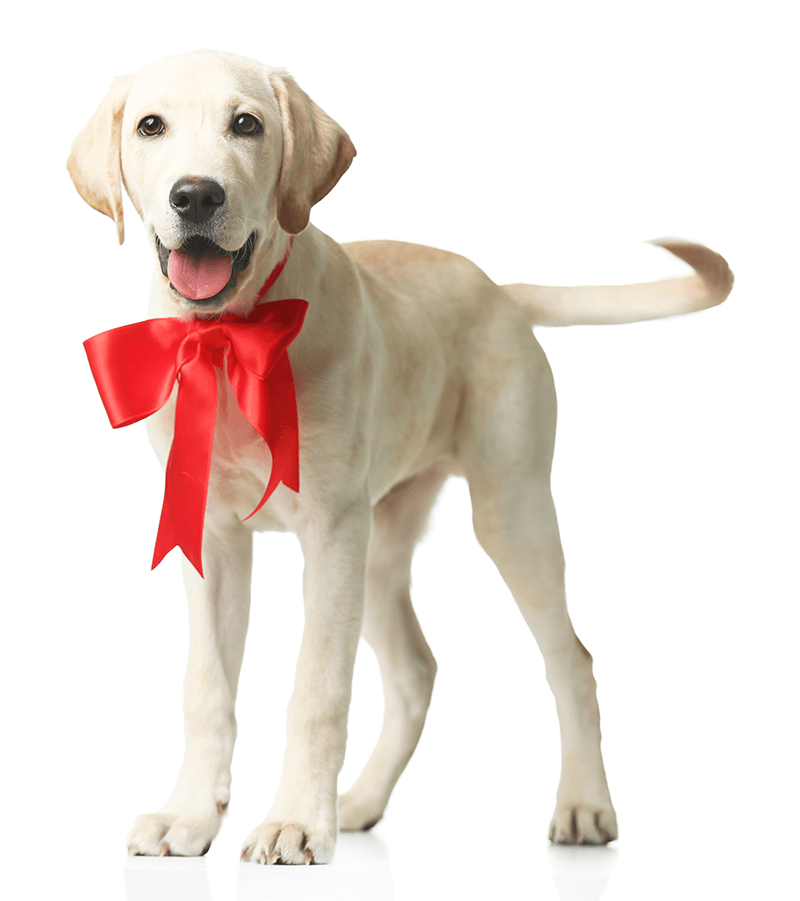
2. Night Time Routine & Quality Sleep
Quality sleep is paramount to memory formation and the body’s ability to regulate the stress response. As a sleep deprived puppy parent, you will likely relate to that!
To have a well-rounded puppy, we need to ensure they sleep well during the day and night.
You will need to get up a couple of times a night to take your puppy out to toilet and decrease this as your puppy appears to develop the ability to hold their bladder and bowels.
Many puppies will struggle sleeping alone at first. It is strongly advised that you do not let them ‘cry it out’, as this is considered to create significant levels of stress which can then affect their behaviour in the day and may lead to negative associations with cues associated with sleeping (including at night time).
Helping your puppy feel safe in the world is the most important thing you can teach them, and this includes their sleeping routine.
As a social species, dogs are social sleepers. The ability to sleep alone will be based on a good sleep routine. This will initially mean you should sleep near them for a while. You may need to sleep downstairs with your puppy, or bring them upstairs to sleep next to your bed in a penned area. How long you need to do this will vary on your puppy, don’t feel under pressure to rush this process.
Consideration should be given to where you are expecting your puppy to sleep. Areas of the home with lots of noise or household activity may trigger disturbed sleep. Try and tie in your household chores with when the puppy is active after a period of rest and engagement with you.
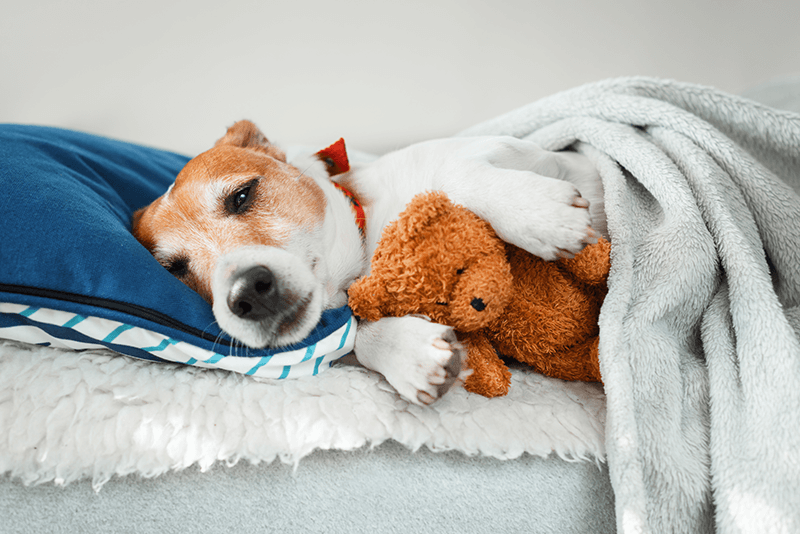
3. Crating/ penning/ free range
In my opinion, the sooner you give your puppy freedom the more quickly the home environment becomes less novel. There is such a thing as over-confinement.
It's important to ensure your home is puppy-proofed and that you supervise your puppy in parts of the home where there are more interesting and potentially less-safe things for them to investigate.
A safe place is only a safe place if your puppy enjoys being in there! More often than not, puppies need these areas to in a calm and quiet part of the home and near where you will be, for example, in the lounge.
There is too much pressure on owners to crate train dogs. Crating is not a necessity and can in fact inhibit the dog’s natural sleeping behaviour, which is often to move from place to place across the day. Dogs do not ‘den’ to sleep. Denning is more commonly observed in bitches raising puppies.
If your puppy does not like their crate, try not feel under pressure to persist in crating them. There are alternatives, such as using a puppy pen or stair gated area. However, some puppies rest better for having free range.
Of course, your puppy will likely need to have their space managed to an extent and these areas are helpful in managing problematic times, such as the zoomies.
Your puppy should enjoy being in any confined area. You can help them enjoy their confined area by giving them Kongs, Chews, Lickimats and Snufflemats in there when they are active.
4. Toilet Training
There’s often a race against time to have a toilet trained puppy. Their progress will be based on many factors from the breeder setup/environment, their size (small puppy, small bladder), how easily they get excited, their diet and even the layout of your home.
You need to supervise your puppy when they are active, being ready to take them outside frequently across the day when they are active following play, eating, drinking and waking from rest.
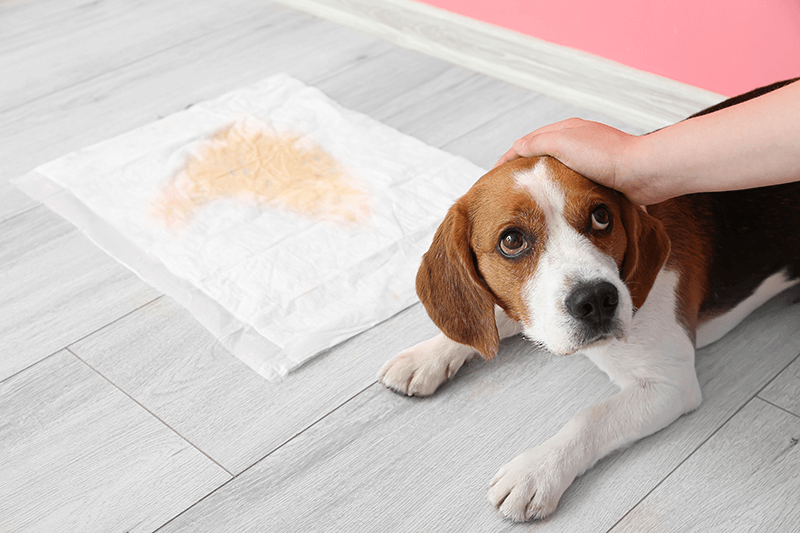
5. Prevent problem behaviour (Management)
Anticipate problem scenarios and steer your puppy onto alternative activities. Visitors coming round? Give your puppy a Kong to help them stay calm. Making dinner? Give your puppy a puppy-safe chew to gnash on so they stay out the way. Crazy Mouthing Puppy Hour approaching? How about a treat search in the garden. Need to focus on work? Give your puppy a series of activities to occupy themselves for a period of time.
Furthermore, preventing problem behaviour through environmental management is advised. Picking up shoes and the wash basket prevents chewing or stealing of items. Put a stair gate on the bottom of the stairs to prevent your puppy climbing the stairs.
6. Be Patient!
Your puppy wasn’t born knowing how to behave and you need to allocate time to gently help them learn, recognising the limits of their ability to focus for long durations and that recalling information (forming memories) can require lots of repetition.
Try and avoid chastising your puppy for unwanted behaviours and consider how can you help them learn what you want them to do using kind and gentle methods, utilising positive-reinforcement training.
Puppies will be puppies! They will be curious, they will mouth when over stimulated, they will sometimes struggle to focus.
To manage ‘the zoomies’ and mouthing behaviour, spot the early signs or problem contexts and steer your puppy onto something else to do before they escalate.
Mouthing is a development stage behaviour. Your puppy will not stop mouthing before this phase runs its course, but you can certainly help manage the intensity and impact of mouthing by responding calmly and consistently. Giving your puppy something to do in their confinement area and staying close by can help them calm down more easily.
By minimising the stress surrounding the zoomies and mouthing, you will help prevent mouthing and zoomies lasting longer than the development phase, i.e. it becoming a learned behaviour.
7. Diet
It’s advisable to not make changes to your puppy’s diet too soon. However, if your puppy’s diet is not the quality you would choose or you observe signs the food may not suit your puppy, such as too frequent pooing (5+ times a day for puppies) or they have loose stools, then it may be wise to consider switching them onto a better quality food once they’ve had a few days to settle into the home. Naturally, I would recommend Nutriment’s Raw Puppy Formula.
To motivate your puppy to respond to you, high value treats are often needed. You have a lot of teaching to do, and thus, a lot of treats will be required. Praise is sometimes not motivating enough.
Fresh food, such as cooked chicken, is not a bad thing for dogs. Variation in the diet can be healthy and nutritionists advise up to 20% allowance in a dog’s daily intake for additional foods such as ‘treats’ and chews.
Fret not over the concept of ‘human food’. Food is food!
You’ll likely get better results for ditching packaged treats that are full of grains and sugars. Nutriment’s dehydrated treat range are full of yummy, puppy-safe treats that will motivate your puppy to respond to you.
8. New Experiences
For the first few days your puppy is at home, it’s sensible to keep the home as quiet as possible to allow them to develop a routine. This includes not taking them to the vet for their first general health check too soon after their arrival, unless of course they need treatment for something.
Their first vet visit (and all vet visits) should be a positive experience, allowing them time to explore the consult room and using food to distract them from potentially aversive procedures such as vaccination.
As your puppy finds their confidence around the home, gradually increase their exposure to new things at a rate you feel they can cope. This includes with visitors to the home and meeting dogs and people on walks.
Be mindful to observe your puppy’s body language. It’s better they approach people and dogs on their terms and that individuals behave in a way that does not over excite nor worry your puppy.
If you feel your puppy is anxious about certain environments, such as by walking along the roadside, it’s better to cease putting them in that environment and to consider how you can expose them to that context more gradually.
I generally encourage owners to start outdoor experiences (walks) in quiet, green locations. Puppy ‘walks’ should be solely about the puppy’s experience, not about the distance covered. Your focus should be on your puppy, so tying it in with your existing routine, such as the school run, is not advisable.
Not all puppies will cope with lots of human attention or meeting lots of dogs, while others may become over stimulated and excessively excited. If you want a calm dog, instil the concept of calm by walking them in locations where they are relaxed- and gradually increase the intensity of the walk location as and when your puppy can cope.
Socialisation is not a race. Remember, the primary thing your puppy needs to learn is that they are safe! Positive experiences stem from confidence.
9. Training
Once your puppy seems settled and confident around you and the home, you can slowly start to chip away at training. This takes time, as not all puppies can focus for long periods of time.
Key activities to focus on with puppies are; recall (response to name), “drop” (trade picked up items for treats parallel to this), getting use to walking equipment and walking nicely on a leash.
Learning to cope home alone needs to be attempted carefully and time alone should be increased gradually when your puppy demonstrates the ability to cope. Start the training when your puppy is settled into the home and their routine. Do short durations at first (this may be 30 seconds for some puppies) and watch them live on a camera so you can come back quickly if they appear anxious or frustrated.
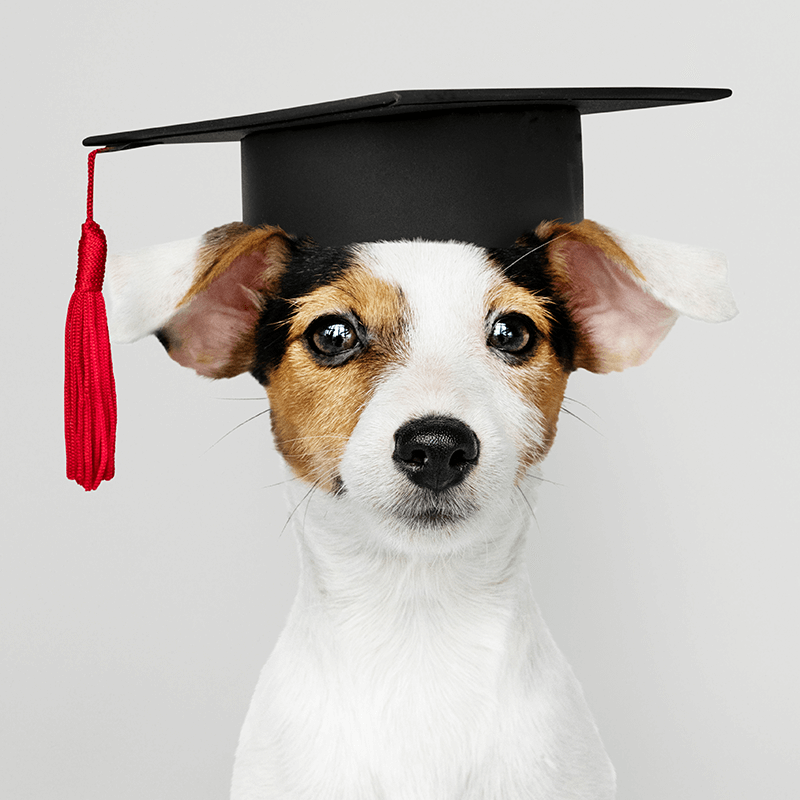
10. Manage expectations….. but have fun!
Behaviour change in animals is complex, requiring a lot of forethought and readiness to adapt to their responses.
Teaching a dog to adapt to our lives and behave in ways that are often unnatural to them is a big ask. We therefore have a duty to teach them with kindness and patience.
Remind yourself daily (or hourly!) that dogs think and behave differently to us, and they never ‘play up’ to intentionally upset us- because their brains are simply not wired that way.
The sheer number of things we have to teach a puppy can feel incredibly overwhelming. Take your time, take the pressure off you both and try your best to enjoy what will be for many, a steep learning curve. You will both get there, and if you are struggling, seek support from a suitably qualified professional. The ABTC register lists suitably qualified and accredited trainers and behaviours across the UK.
They are only a puppy once, so do your best to find the joy in the process amidst the inevitable and occasional feelings of fatigue and frustration.
I promise you, it does get easier. Have faith in the science of training and behaviour. It does work if applied consistently.
I hate to break it to you, but there’s more to come…..your puppy will next turn into an adolescent dog and that’s when the ‘fun’ REALLY starts!

